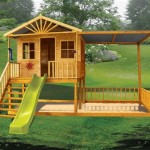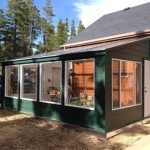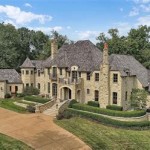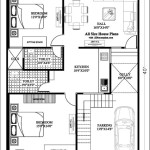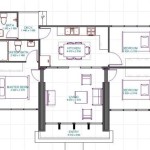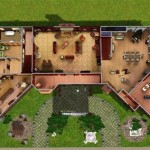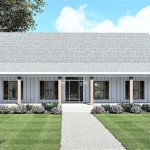Essential Aspects of House Plan Design
Designing a house plan involves meticulous planning and consideration of various factors to create a functional and aesthetically pleasing living space. Whether you're an experienced homeowner or a first-time homebuilder, understanding the essential aspects of house plan design is paramount. This article aims to provide a comprehensive overview of key elements to consider when designing your dream home.
Functional Layout
The layout of your house plan should prioritize functionality and maximize the use of space. Consider the flow of movement between rooms, ensuring that areas connect seamlessly. Plan for adequate storage solutions in each room, and design a kitchen that facilitates efficient meal preparation. The number of bedrooms and bathrooms should align with your family's needs and future growth.
Energy Efficiency
With rising energy costs, incorporating energy-efficient features into your house plan is essential for long-term savings. Utilize natural light through strategically placed windows and consider installing solar panels. Opt for energy-efficient appliances and insulation to minimize heat loss. By designing with sustainability in mind, you can reduce your carbon footprint and create a healthier living environment.
Structural Integrity
The structural integrity of your house plan is of utmost importance. A sound foundation, sturdy walls, and a well-designed roof system ensure the safety and longevity of your home. Consult with a qualified architect or engineer to assess the structural requirements based on your soil conditions and desired design. Proper drainage systems and waterproofing measures are vital to protect your home from water damage.
Exterior Aesthetics
The exterior appearance of your house plays a significant role in its curb appeal. Choose a design that complements your personal style and the surrounding architecture. Consider the materials used for the exterior cladding, as they impact the overall look and durability of your home. Landscaping and outdoor living spaces can enhance the aesthetics and create a harmonious connection between your home and its surroundings.
Interior Design
Interior design involves creating a cohesive and comfortable living space. Plan for sufficient natural and artificial lighting to enhance the ambiance and functionality of each room. Select a color scheme and flooring that complements your decor and creates a desired atmosphere. Optimize space utilization through clever furniture placement and consider custom built-ins to maximize storage and organization.
Cost and Budget
It's essential to align your house plan with your financial capabilities. Determine a realistic budget and consult with contractors to estimate construction costs. Consider the cost of materials, labor, and permits. Make informed decisions and prioritize features that matter most to you within your budget. A carefully planned design can help you stay within your financial limitations and avoid unforeseen expenses.
Timeline and Construction
Creating a realistic timeline for your house plan is crucial to avoid delays and unnecessary stress. Factor in the design process, permitting, and construction phases. Establish a clear communication channel with your builder to ensure regular updates on progress and anticipate any potential challenges. By planning ahead and staying informed, you can navigate the construction process smoothly and minimize disruptions to your daily life.

House Plans How To Design Your Home Plan

Floor Plans Types Symbols Examples

Floor Plans Types Symbols Examples

Small House Plans Popular Designs Layouts

Floor Plans Types Symbols Examples

Small House Design Shd 2024007 Pinoy Eplans One Y Bungalow Plans Layout

Top 5 Modern House Plans With Photos Floor Archid

House Plans How To Design Your Home Plan

House Plans How To Design Your Home Plan

Free House Design Home And Plans

